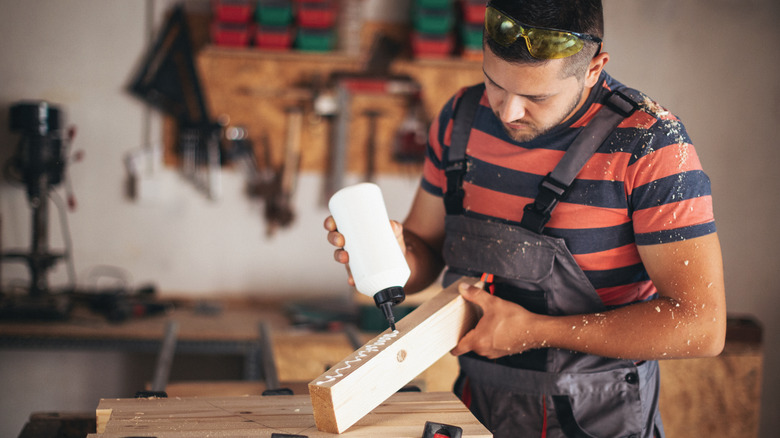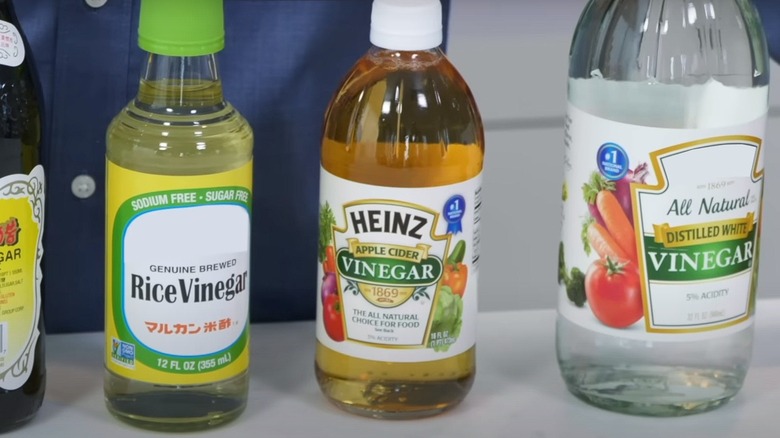The Secret Ingredient To Reach For If Your Wood Glue Is Getting Too Thick
We may receive a commission on purchases made from links.
Whether you're building fine furniture or seeking a fast fix for a splintered wood deck, wood glue goes a long way. As such, it's hard to imagine a hobbyist woodworker getting through an entire full-size bottle before it thickens with age and eventually becomes unusable. Thankfully, the solution is simple, and you probably already have it in your kitchen cupboard in the form of vinegar. Adding a little of this household staple will dilute and loosen the wood glue, making it easy to apply during your next project.
Wood glue cures in part through evaporation. Depending on the type you have, it could be losing water, acetic acid, or other liquids. After this goes on for a while, squeezing it out of the bottle becomes nearly impossible. Not long after that, you're reduced to brushing the thick stuff on and hoping for the best. But it turns out that reviving wood glue is so easy that you don't need to consider tossing out that old bottle.
Which vinegar to use to thin wood glue
Thinning wood glue isn't complicated, but when you're deciding which vinegar to use and how much, it helps to know why it works. There are two main types of wood glue: polyvinyl alcohol (PVA) and polyvinyl acetate (PVAc). The big difference is that PVAc glues are more water-resistant than PVA glues and can't be diluted with water. However, they can be mixed with acetic acid. On the other hand, PVA glue can be thinned with either one. The term "PVA" is often applied to both, which gets confusing. But because vinegar is a mixture of acetic acid and water, it can thin either type of glue, meaning you don't need to worry about which one you have.
The stronger your vinegar, the better for thinning wood glue. That said, the same distilled white vinegar that's ideal for cleaning is about 5% acetic acid, which will work just fine. Still, opting for a more concentrated option, like Harris 30% Vinegar, will work even better. You can start the process by adding a few drops directly into the glue bottle and mixing thoroughly. Then add more as needed — as much as a teaspoon or two — depending on how thick your glue has gotten. Just be sure to stir with something that can reach the bottom, and you'll be gluing again in no time.

